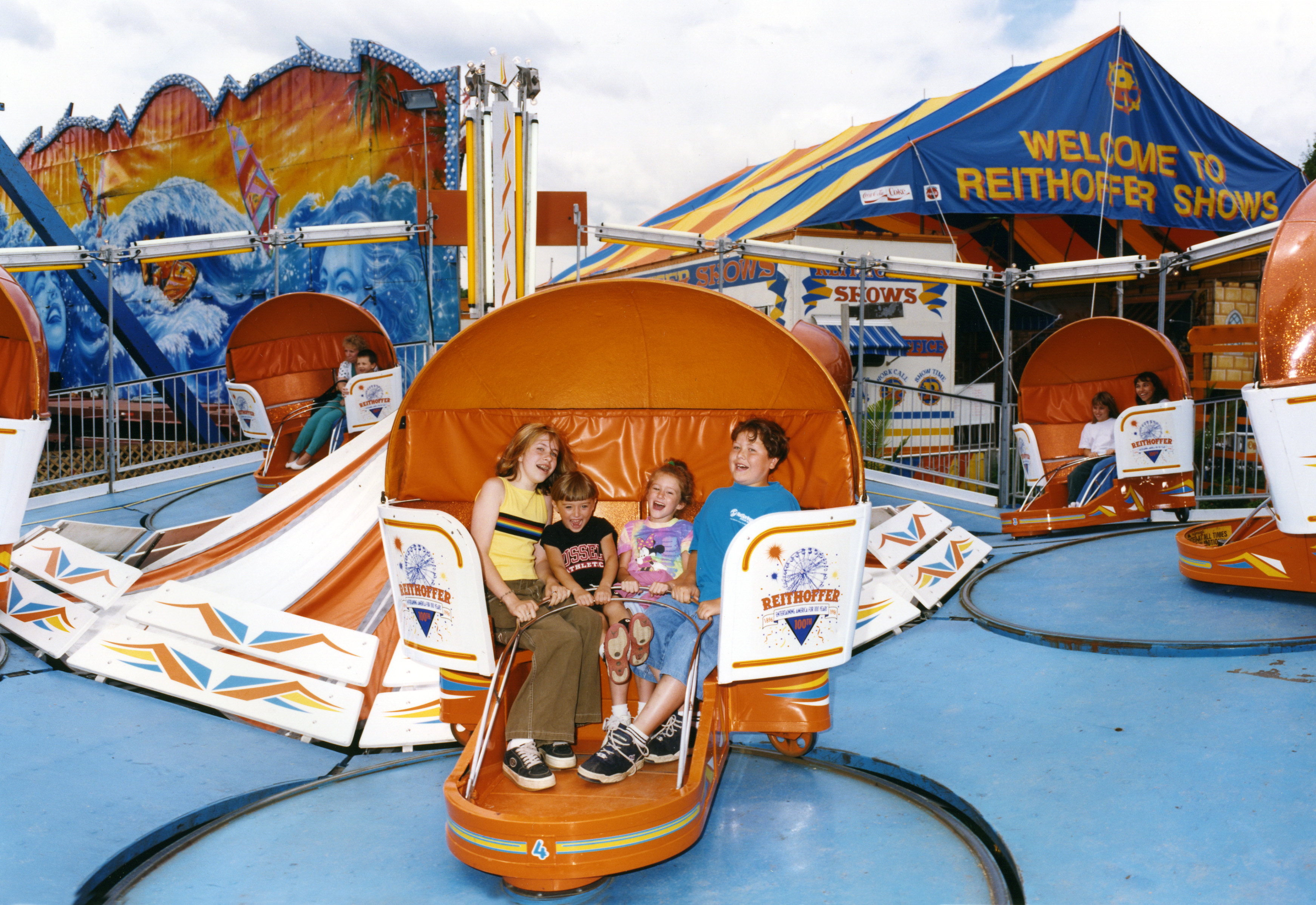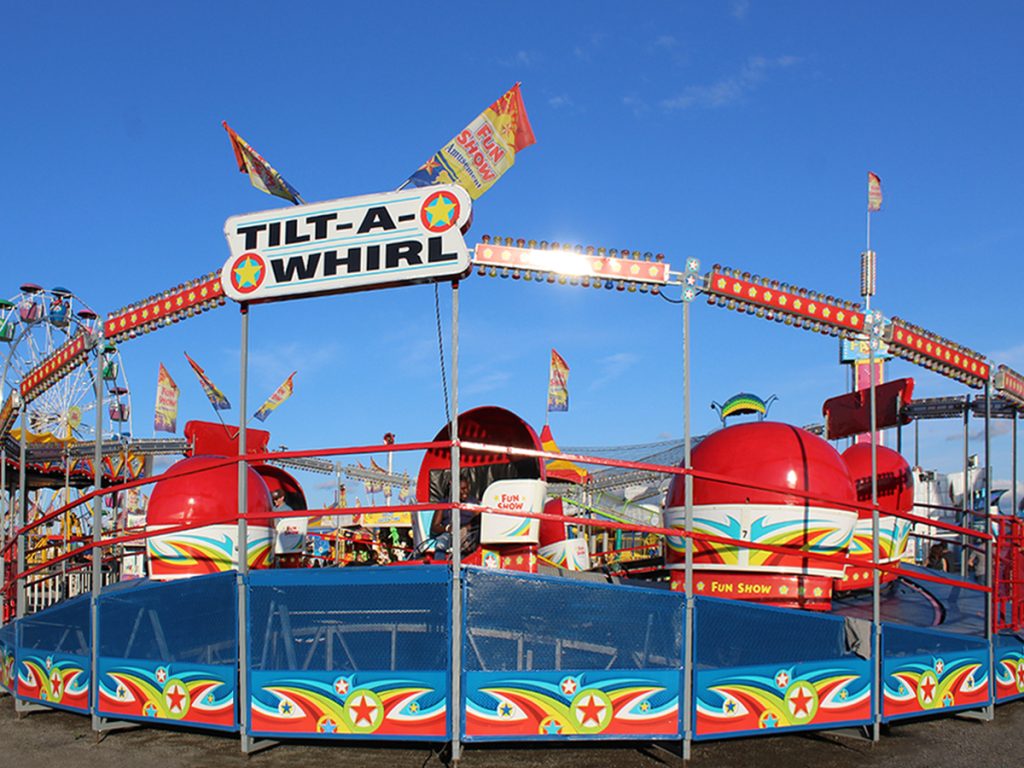Historical Origins of Tilt-a-Whirls
Tilt a whirl – The Tilt-a-Whirl is a classic amusement park ride that has been thrilling riders for generations. But where did this iconic ride come from, and how has it evolved over time?
The Tilt-A-Whirl, a carnival ride that spins and tilts its riders, is a classic amusement park attraction. But did you know that the term “buttermilk” has a slang meaning that’s quite different from the dairy product? According to Urban Dictionary , “buttermilk” can refer to something that is considered to be “weak” or “inferior.” So, if you’re ever feeling down or like you’re not quite measuring up, you might say that you’re feeling “buttermilk.” But don’t worry, even the Tilt-A-Whirl can make you feel a little dizzy and disoriented sometimes.
Inventors and Inspiration
The Tilt-a-Whirl was invented in 1926 by Herbert Sellner, a German immigrant who had come to the United States in 1906. Sellner was a machinist by trade, and he had a passion for amusement park rides. He was inspired to create the Tilt-a-Whirl after seeing a similar ride at a carnival in Germany.
The Tilt-A-Whirl is an amusement park ride that spins and tilts riders in every direction. It’s a classic carnival ride that has been around for over 100 years. The Tilt-A-Whirl is a great example of an underdog story. It’s a simple ride that doesn’t look like much, but it’s one of the most popular rides at any carnival.
The Tilt-A-Whirl is a reminder that even the smallest things can be great.
Sellner’s first Tilt-a-Whirl was a small, hand-operated ride. It consisted of a circular platform with a number of cars attached to it. The platform was tilted back and forth by a hand crank, and the cars spun around the platform as it tilted.
The tilt-a-whirl’s dizzying spins and gravity-defying swoops evoke a sense of biblical drama, akin to the legendary David and Goliath story. Just as David, the underdog, triumphed over the formidable Goliath, so too do riders on the tilt-a-whirl conquer their fears, emerging victorious from the chaotic whirl.
Early Development
Sellner’s Tilt-a-Whirl was a hit with riders, and he soon began to manufacture the ride for other amusement parks. In 1927, he formed the Sellner Manufacturing Company, which became the leading manufacturer of Tilt-a-Whirls in the world.
Over the years, the Tilt-a-Whirl has undergone a number of changes. The original hand-operated ride was eventually replaced by a motor-driven ride. The size of the ride has also increased, and the number of cars has been increased from 8 to 16.
Evolution of Technology, Tilt a whirl
The most significant change to the Tilt-a-Whirl in recent years has been the addition of electronic controls. These controls allow the ride operator to control the speed and direction of the ride, and they also provide a number of safety features.
The Tilt-a-Whirl is a classic amusement park ride that has stood the test of time. It is a ride that is enjoyed by people of all ages, and it is sure to continue to be a popular attraction for years to come.
The tilt-a-whirl’s relentless spin evokes a sense of giddy disorientation, akin to the predicament of Rumpelstiltskin , the impish creature who spun straw into gold but was undone by his own avarice. Like Rumpelstiltskin’s futile attempts to conceal his identity, the tilt-a-whirl’s centrifugal force threatens to expose our innermost fears and vulnerabilities, leaving us spinning in a whirlwind of uncertainty.
Engineering and Physics of Tilt-a-Whirls

Tilt-a-Whirls, with their mesmerizing blend of spinning and tilting motions, offer a unique and thrilling experience. Behind this captivating spectacle lies a fascinating interplay of physics and engineering principles that govern the ride’s operation and provide riders with an unforgettable adventure.
The Tilt-a-Whirl consists of a rotating circular platform with multiple arms extending outward. Each arm supports a car that accommodates several riders. The entire structure is mounted on a central pivot point, allowing the platform to tilt and rotate simultaneously.
Platform and Arms
The platform of a Tilt-a-Whirl is typically made of a sturdy material like steel or aluminum, providing a stable base for the ride’s operation. The arms, which connect the platform to the cars, are designed to withstand the forces generated during rotation and tilting. These forces include centrifugal force, which pushes riders outward as the platform spins, and gravitational force, which pulls riders downward.
Rotating Base
The rotating base of the Tilt-a-Whirl is powered by an electric motor. The motor drives a gear system that engages with a ring gear attached to the underside of the platform. This mechanism allows the platform to rotate smoothly and at varying speeds, contributing to the ride’s thrilling experience.
Forces on Riders
During operation, riders on a Tilt-a-Whirl experience a combination of forces. Centrifugal force, as mentioned earlier, pushes riders outward as the platform spins. This force is countered by the inward force of gravity, which pulls riders toward the center of the platform. The combined effect of these forces creates a sensation of weightlessness and exhilaration.
In addition, riders experience a lateral force as the platform tilts. This force pushes riders toward the outside of the tilted section, creating a sense of being pinned against the car’s seat. The magnitude of the lateral force depends on the angle of tilt and the speed of rotation.
Cultural Impact and Popularity of Tilt-a-Whirls: Tilt A Whirl

Tilt-a-Whirls have become cultural icons in the realm of amusement and entertainment. Their presence in amusement parks, carnivals, and various other entertainment venues has solidified their significance in society.
The enduring appeal of Tilt-a-Whirls can be attributed to several factors. Firstly, they provide a unique and thrilling experience that combines speed, centrifugal force, and disorientation. The sensation of being suspended in the air while the ride spins and tilts creates a sense of excitement and exhilaration that is unmatched by many other rides.
Popularity in Amusement Parks and Carnivals
Tilt-a-Whirls are a staple attraction in amusement parks and carnivals worldwide. Their popularity stems from their accessibility to a wide range of ages and their ability to cater to both thrill-seekers and families alike. The relatively low height requirement and gentle nature of the ride make it suitable for younger riders, while the speed and spinning motion provide an adrenaline rush for older guests.
Impact on Popular Culture
Tilt-a-Whirls have also left an imprint on popular culture. Their distinctive appearance and the iconic sound of their spinning have been featured in numerous films, television shows, and music videos. The ride has become synonymous with summer fun, nostalgia, and the carefree spirit of childhood.
The cultural significance of Tilt-a-Whirls extends beyond their entertainment value. They have become symbols of amusement and joy, evoking memories of laughter, screams, and the shared experiences of family and friends.
Tilt-a-Whirl, the iconic amusement park ride, sends riders spinning through the air, evoking a sense of both exhilaration and disorientation. Similarly, the bumper-to-bumper story captures the chaos and confusion of modern life, where individuals navigate a relentless stream of encounters and distractions.
Just as Tilt-a-Whirl riders emerge from the ride with a newfound appreciation for stability, so too can we find moments of clarity and connection amidst the whirlwind of our daily lives.